The cacao and chocolate story

01. Welcome to Casa Coronel, the Cocoa and Chocolate Museum!
In 1671, the pirate Henry Morgan and his men stormed the city, looting and setting it ablaze.
During the house’s restoration, begun in 2016, iron cannonballs were discovered—silent witnesses to that historic attack.
This house is one of the few remaining buildings that preserve Spanish architecture in the Old Quarter, reflected in the vertical placement of wood on its façade.
Its earliest historical records date back to 1880, when Panama was still part of Colombia.
The current owners have sought to listen to the stories within its walls, preserving its essence and magic as much as possible.
Today, it opens its doors as a museum, blending history with a deep passion: the world of cocoa.
We invite you to uncover its secrets and immerse yourself in a sensory experience, where the past comes to life through the aromas of chocolate.
02. Theobroma Cacao: the sacred tree and food of the Gods
As you listen to this audio, observe the images of Theobroma Cacao on the ground floor of the Museum: its tree, flower, fruit, and a heart-shaped pod.
This tree is the origin of cacao, the essential ingredient of chocolate.
Its scientific name, coined by Carl Linnaeus in 1753, combines the human with the divine. “Theo” means God, and “broma” means food—hence its designation as the “Food of the Gods.”
Native to the tropical rainforests of present-day Ecuador, cacao thrives in warm, humid climates. Its cultivation spread throughout Mesoamerica, where it was essential to the Maya and Aztec cultures.
There are three main varieties of cacao: Criollo, which today represents a small percentage of production and is grown in South America, Mexico, and the Caribbean; Forastero, the most resilient and widely cultivated variety worldwide; and Trinitario, a hybrid of Criollo and Forastero.
Fun fact: Cacao trees can live up to 100 years, although their productive lifespan is only about 25 years. Each tree produces around 30 pods annually.
We invite you to go up to the Mezzanine for the next explanation.


02. Theobroma Cacao: the sacred tree and food of the Gods
As you listen to this audio, observe the images of Theobroma Cacao on the ground floor of the Museum: its tree, flower, fruit, and a heart-shaped pod.
This tree is the origin of cacao, the essential ingredient of chocolate.
Its scientific name, coined by Carl Linnaeus in 1753, combines the human with the divine. “Theo” means God, and “broma” means food—hence its designation as the “Food of the Gods.”
Native to the tropical rainforests of present-day Ecuador, cacao thrives in warm, humid climates. Its cultivation spread throughout Mesoamerica, where it was essential to the Maya and Aztec cultures.
There are three main varieties of cacao: Criollo, which today represents a small percentage of production and is grown in South America, Mexico, and the Caribbean; Forastero, the most resilient and widely cultivated variety worldwide; and Trinitario, a hybrid of Criollo and Forastero.
Fun fact: Cacao trees can live up to 100 years, although their productive lifespan is only about 25 years. Each tree produces around 30 pods annually.
We invite you to go up to the Mezzanine for the next explanation.

03. Cacao in Pre-Columbian Times
It is an account of his travels to the Americas, and probably the first European publication about the use of cacao.
In one of the images, the word “cacahuatl” stands out at the foot of a cacao tree, with cacao pods drying in the sun, guarded by an indigenous person.
In the second image, the importance of cacao cultivation and transportation is shown, with cacao also used as currency.
Now, observe the vertical image. It is an illustration from the Codex Vindobonensis, a pictographic manuscript probably created in the early 16th century, shortly after the Spanish conquistadors arrived in the Americas.
Pay attention to how cacao was used in Mexica rituals and ceremonies, and its connection to the gods, especially Quetzalcoatl, the feathered serpent god, associated with creation and knowledge.
04. The Origin of Cacao Domestication
This is a significant archaeological discovery that sheds new light on the origins of cacao domestication.
This object, which is approximately 5,300 years old, belongs to the pre-Hispanic Mayo Chinchipe Marañón culture and comes from Palanda, located in the Amazon region of Ecuador.
One of the key aspects of this finding is that, by analyzing the residues in the vessel, researchers were able to identify traces of cacao. This suggests that the communities of that time were already processing the beans and using them in beverages or rituals, long before cacao became an essential element in other Mesoamerican cultures.
This discovery rewrites the history of cacao, positioning Ecuador as the first known place where cacao was cultivated and used in a significant way.
The bottle, made of ceramic, has two faces: one of a shaman and one of a jaguar. The figure emerges from the bivalve of a spondylus shell.
It is believed that an hallucinogenic and energizing cacao-based drink was prepared inside, allowing those who consumed it to be transported to other dimensions.
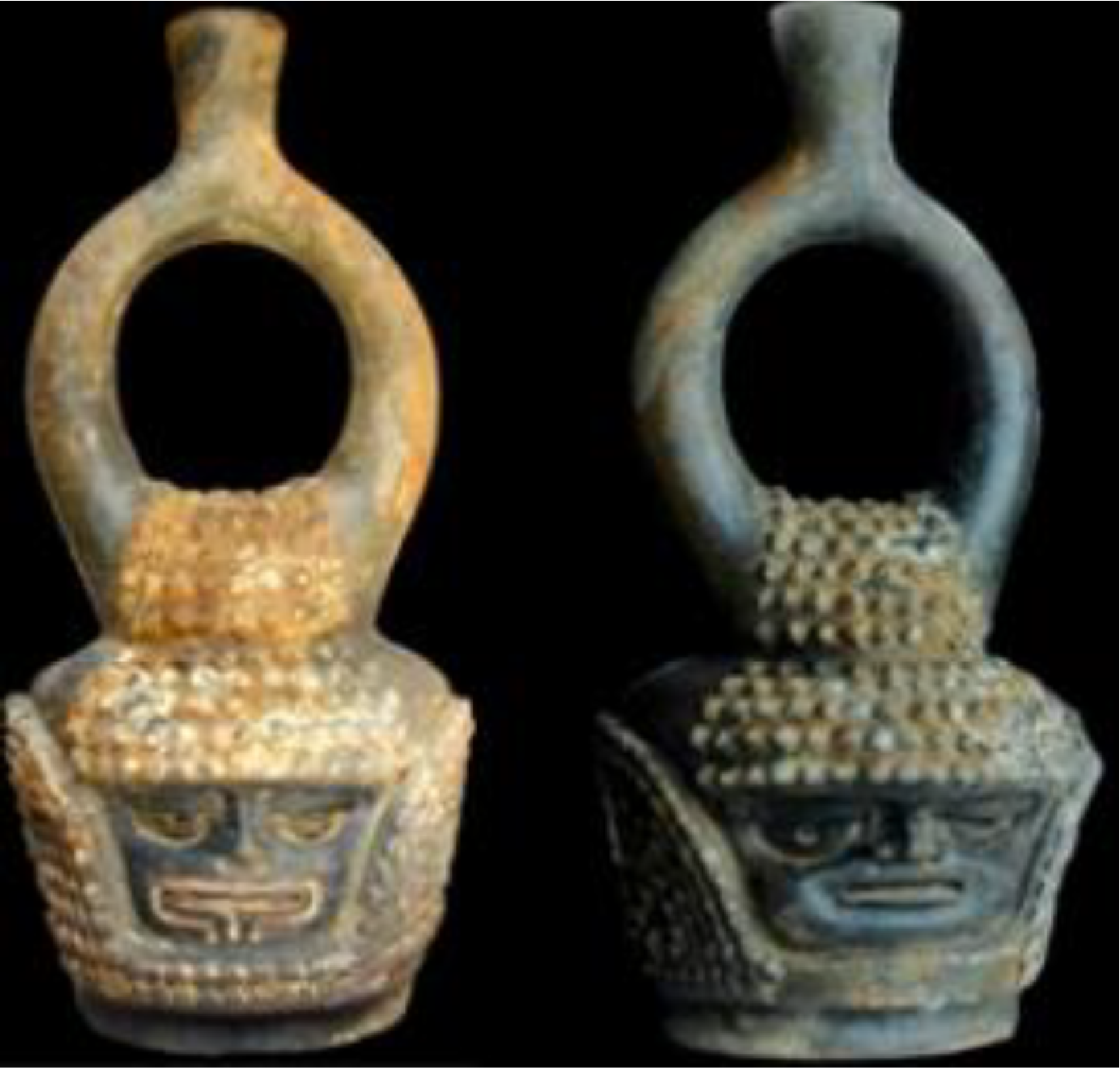

04. The Origin of Cacao Domestication
This is a significant archaeological discovery that sheds new light on the origins of cacao domestication.
This object, which is approximately 5,300 years old, belongs to the pre-Hispanic Mayo Chinchipe Marañón culture and comes from Palanda, located in the Amazon region of Ecuador.
One of the key aspects of this finding is that, by analyzing the residues in the vessel, researchers were able to identify traces of cacao. This suggests that the communities of that time were already processing the beans and using them in beverages or rituals, long before cacao became an essential element in other Mesoamerican cultures.
This discovery rewrites the history of cacao, positioning Ecuador as the first known place where cacao was cultivated and used in a significant way.
The bottle, made of ceramic, has two faces: one of a shaman and one of a jaguar. The figure emerges from the bivalve of a spondylus shell.
It is believed that an hallucinogenic and energizing cacao-based drink was prepared inside, allowing those who consumed it to be transported to other dimensions.

05. Cacao as currency
In Mesoamerican civilizations, cacao was used as a form of currency, and its value was determined by the number of beans required to acquire certain products or services.
For example, a rabbit was exchanged for 10 cacao beans, a sack of maize for 15, a slave for 100, and a luxury garment for up to 1,000.
These quantities of cacao not only reflected its role as currency but also the significance of this bean in the economy, culture, and religious practices of Mesoamerican peoples.
Now, take a look at the map of the great Marañón or Amazon River by Samuel Fritz, dated 1707.
In his annotations, he mentions the importance of cacao trade along the river.
Also, observe the illustration of the Guayaquil raft by Jorge Juan and Antonio de Ulloa from 1748, which testifies to the maritime trade of Mesoamerican peoples along the Pacific.
We invite you to continue your journey towards the archaeological pieces for the next explanation.
06. The gran cacao
Les Gran Cacao
Before continuing, pause for a moment and take a close look at the old photographs that capture the history of cocoa. Observe the landscapes, the plantations stretching to the horizon, and the faces of those who dedicated their lives to this crop.
Cocoa has been one of the most influential agricultural activities in global history, shaping economies and cultures from pre-Columbian times to the present day. For centuries, the fertile lands of Latin America were its cradle, producing some of the world’s most coveted beans.
As global demand for chocolate surged, production expanded beyond the continent, reaching Africa and Southeast Asia. Between 1870 and 1920, the cocoa boom in Latin America gave rise to an elite group of producers known as the Gran Cacao.
In regions such as Venezuela and Ecuador, these landowners not only dominated the trade but also perfected cultivation, fermentation, and drying techniques, enhancing the quality and international prestige of their beans. Fortunately, their legacy lives on.
Now, we invite you to continue your journey and discover the history of cocoa in Panama.
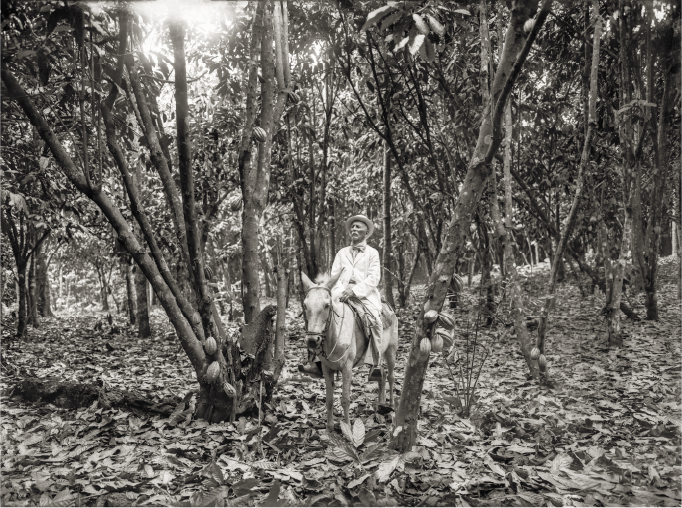

06. The gran cacao
Before continuing, pause for a moment and take a close look at the old photographs that capture the history of cocoa. Observe the landscapes, the plantations stretching to the horizon, and the faces of those who dedicated their lives to this crop.
Cocoa has been one of the most influential agricultural activities in global history, shaping economies and cultures from pre-Columbian times to the present day. For centuries, the fertile lands of Latin America were its cradle, producing some of the world’s most coveted beans.
As global demand for chocolate surged, production expanded beyond the continent, reaching Africa and Southeast Asia. Between 1870 and 1920, the cocoa boom in Latin America gave rise to an elite group of producers known as the Gran Cacao.
In regions such as Venezuela and Ecuador, these landowners not only dominated the trade but also perfected cultivation, fermentation, and drying techniques, enhancing the quality and international prestige of their beans. Fortunately, their legacy lives on.
Now, we invite you to continue your journey and discover the history of cocoa in Panama.

07. Welcome to the Panama Room.
Discover the deep connection between cacao and Panama’s ancestral cultures.
In Guna oral tradition, cacao is a sacred gift from the gods. One of the most fascinating stories is The Legend of the Golden Seed. As you listen, observe the golden cacao before you. Long ago, the Gunadule people did not yet know cacao.
Paba Tata, the Great Creator Spirit, sent them a divine gift to grant strength, health, and wisdom. In the sacred forests of Guna Yala, a wise woman found a golden seed by a river
As she held it, she felt its energy and heard a voice:
“Plant me with love, protect me with respect, and I will share my strength with your people.”
She planted the seed, and a tree with large fruits grew. When they ripened and split open, their seeds shone like gold. She prepared an infusion and shared it: the elders gained wisdom, the warriors strength, and the sick were healed. From that moment, cacao was called The Golden Seed, a divine treasure that brought well-being to the Gunadule.
Observe on the lime and stone wall the image of that wise Guna woman, guardian of nature’s secrets.
08. Gunas, Cacao and Molas
Cacao is a social and spiritual element with deep significance for the Guna, similar to the Mesoamerican civilizations like the Aztecs and Incas, but with their own unique characteristics.
One of their most distinctive traits is textile art, especially the molas, which are woven through multiple layers with vibrant colors. Look at the molas in this room and pay close attention to the scenes related to the use of cacao. In Guna Cosmology, cacao is linked to nature and the spirits of the jungle.
Cacao is a central beverage in the Guna daily diet, made with banana, called Madú.
The smoke of cacao is used in shamanic rituals to connect the human with the divine and balance body and soul. It is also fundamental in transitional ceremonies such as birth, puberty, illness, and death.
The Guna are well aware of the medicinal properties of cacao, which, thanks to its flavonoids, helps reduce hypertension and improve circulation.
Continue your journey and discover the tools used to prepare cacao over the centuries.


08. Gunas, Cacao and Molas
Cacao is a social and spiritual element with deep significance for the Guna, similar to the Mesoamerican civilizations like the Aztecs and Incas, but with their own unique characteristics.
One of their most distinctive traits is textile art, especially the molas, which are woven through multiple layers with vibrant colors. Look at the molas in this room and pay close attention to the scenes related to the use of cacao. In Guna Cosmology, cacao is linked to nature and the spirits of the jungle.
Cacao is a central beverage in the Guna daily diet, made with banana, called Madú.
The smoke of cacao is used in shamanic rituals to connect the human with the divine and balance body and soul. It is also fundamental in transitional ceremonies such as birth, puberty, illness, and death.
The Guna are well aware of the medicinal properties of cacao, which, thanks to its flavonoids, helps reduce hypertension and improve circulation.
Continue your journey and discover the tools used to prepare cacao over the centuries.

09. History of Grinders
Their origins date back to the ancient Mesoamerican civilizations, such as the Aztecs and the Maya, who used these instruments to mix and froth cacao.
Typically made of wood, grinders are characterized by their elongated shape and multiple grooves, which facilitated the creation of a creamy foam that was essential in the preparation of cacao. This process was not only about taste but also symbolism. The foam represented a connection with the divine and the energy of the gods.
With the arrival of European conquerors, the grinders were adapted and perfected, retaining their essence in cocoa-producing regions. In Latin America, grinders remain a cherished tool in the traditional preparation of chocolate, where the art of whisking and frothing continues to be a ritual.
Now, take a close look at the lamp in the museum. It is a piece that represents an inverted pyramid, decorated with nearly 500 grinders crafted in Mexico by the Gómez family, traditional artisans from Oaxaca.
Continue your journey to the second floor.
10. Napoleon and the Chocolate Revolution
Did you know that chocolate also conquered Napoleon Bonaparte?
This military strategist not only relied on cacao to stay energized during his campaigns, but his legacy also left a mark on the history of chocolate.
On January 5, 1860, in commemoration of the great Battle of Solferino, his nephew, Napoleon III, made a decision that would change the fate of chocolate in Europe—eliminating taxes on cacao and paving the way for its democratization.
This act spurred the industrialization of chocolate, making it more accessible and giving rise to the first molds for mass production.
Take a close look at the molds in front of you. Find the small pewter mold crafted in Vienna in the 19th century, designed to produce a dozen delicate chocolate eggs.
Now, compare it with the 20th-century American mold, capable of creating up to 48 pieces at once.
Over time, molds evolved, bringing to life hollow figures such as Easter bunnies, Santa Claus, fruits, and toys. Today, thanks to materials like silicone and polycarbonate, our chocolatiers at the museum can experiment with innovative and personalized shapes.
We invite you to proceed to the next floor.


10. Napoleon and the Chocolate Revolution
Did you know that chocolate also conquered Napoleon Bonaparte?
This military strategist not only relied on cacao to stay energized during his campaigns, but his legacy also left a mark on the history of chocolate.
On January 5, 1860, in commemoration of the great Battle of Solferino, his nephew, Napoleon III, made a decision that would change the fate of chocolate in Europe—eliminating taxes on cacao and paving the way for its democratization.
This act spurred the industrialization of chocolate, making it more accessible and giving rise to the first molds for mass production.
Take a close look at the molds in front of you. Find the small pewter mold crafted in Vienna in the 19th century, designed to produce a dozen delicate chocolate eggs.
Now, compare it with the 20th-century American mold, capable of creating up to 48 pieces at once.
Over time, molds evolved, bringing to life hollow figures such as Easter bunnies, Santa Claus, fruits, and toys. Today, thanks to materials like silicone and polycarbonate, our chocolatiers at the museum can experiment with innovative and personalized shapes.
We invite you to proceed to the next floor.

11. Tableware and Chocolate
As early as the 16th century, drinking chocolate from fine porcelain cups was a social experience that reflected status and sophistication. “Chocolate Houses,” gatherings where people drank chocolate while displaying their finest porcelain sets, became increasingly common in European courts. Pay close attention to the left side of the display cabinet.
You will find fine porcelain chocolate pitchers, some crafted by the most prestigious houses in Europe and Asia. Over time, these vessels evolved, being made from pewter, bronze, and silver.
There are two types of cups that deserve your attention.
Look for the “trembling cups,” which fit securely onto the saucer to prevent chocolate from spilling.
Now, search for the “mustache cups,” specially designed to protect facial hair while drinking chocolate, preserving the mustache—a symbol of masculinity and distinction.
Now, turn your gaze to the right side of the display cabinet and admire the Chinese tableware, known for its delicacy as “eggshell porcelain,” finely hand-decorated with depictions of everyday Oriental scenes.
After observing these pieces, you may proceed to the next station.
12. Interactive games
This space in the museum is dedicated to the most observant visitors, and only those who focus very well will be able to decipher some of our clues.
Look carefully at the cover of the commemorative edition of Charlie and the Chocolate Factory that you have in front of you.
Now, turn your gaze to the window overlooking the Museum’s courtyard and look at the house gate.
Did you notice any similarity?
Again, direct your attention back to the book cover and find the little elf.
Now, look at the railing of the window facing the courtyard.
Did you discover our dear friend, the one who takes care of our Museum?
We have one last riddle for you. Look closely at the frame that contains two books.
It’s the pocket edition of Charlie and the Chocolate Factory.
Focus on the illustration on the back cover. Now, slowly turn your gaze to the right.
Of course! It’s Charlie, who is smelling the most delicious aromas of the chocolates being made inside the museum’s laboratory.
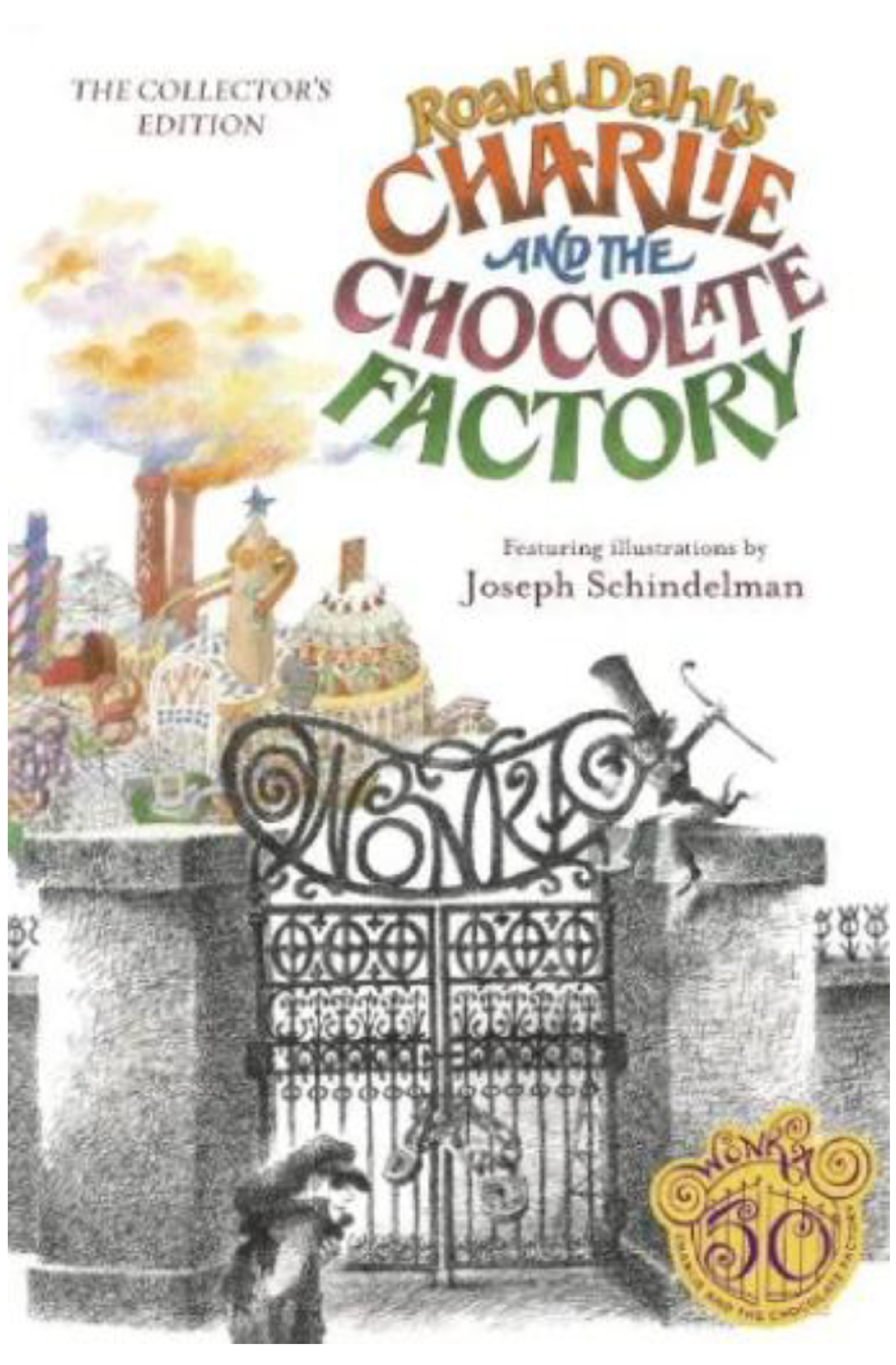

12. Interactive games
This space in the museum is dedicated to the most observant visitors, and only those who focus very well will be able to decipher some of our clues.
Look carefully at the cover of the commemorative edition of Charlie and the Chocolate Factory that you have in front of you.
Now, turn your gaze to the window overlooking the Museum’s courtyard and look at the house gate.
Did you notice any similarity?
Again, direct your attention back to the book cover and find the little elf.
Now, look at the railing of the window facing the courtyard.
Did you discover our dear friend, the one who takes care of our Museum?
We have one last riddle for you. Look closely at the frame that contains two books.
It’s the pocket edition of Charlie and the Chocolate Factory.
Focus on the illustration on the back cover. Now, slowly turn your gaze to the right.
Of course! It’s Charlie, who is smelling the most delicious aromas of the chocolates being made inside the museum’s laboratory.
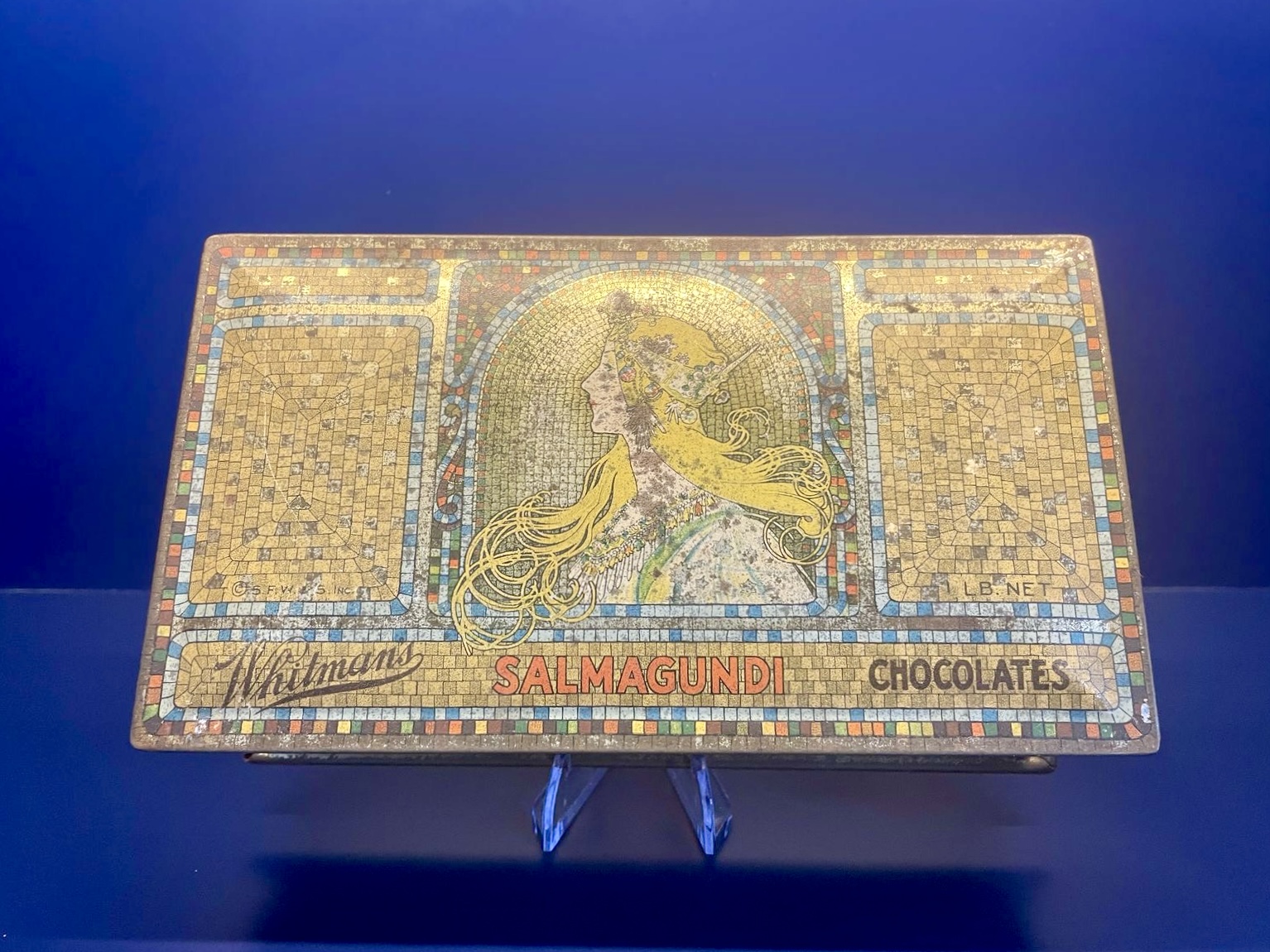
13. Boxes and chocolate
They represent a fascinating window into the history of chocolate consumption and the new marketing techniques that began to shape modern consumer culture.
Many manufacturers realized that, to compete, they needed to educate consumers about the advantages of their products and attract new buyers. They targeted the emerging working classes who could afford small indulgences, positioning chocolate as a mass-consumption product suitable for both children and adults.
These posters became essential elements of the visual culture of the time and were displayed in stores and public spaces, featuring children, women, and family scenes as main subjects.
Stop at the first row of posters in front of you and take a look at one with a yellow background from the Menier brand, depicting a girl seen from behind.
Observe in detail the sweetness of the scene: the little girl in her school uniform, her perfect braids, her twisted legs, and her effort to write crookedly and innocently on a wall with a piece of charcoal, spelling out “Chocolate Menier.” This is a creation by Firmin Bouisset, who used his own daughter as a model.
This poster is one of our favorites. Which one is yours?
14. Posters and chocolate
The first chocolate advertisements emerged in the late 19th and early 20th centuries.
They represent a fascinating window into the history of chocolate consumption and the new marketing techniques that began to shape modern consumer culture.
Many manufacturers realized that, to compete, they needed to educate consumers about the advantages of their products and attract new buyers. They targeted the emerging working classes who could afford small indulgences, positioning chocolate as a mass-consumption product suitable for both children and adults.
These posters became essential elements of the visual culture of the time and were displayed in stores and public spaces, featuring children, women, and family scenes as main subjects.
Stop at the first row of posters in front of you and take a look at one with a yellow background from the Menier brand, depicting a girl seen from behind.
Observe in detail the sweetness of the scene: the little girl in her school uniform, her perfect braids, her twisted legs, and her effort to write crookedly and innocently on a wall with a piece of charcoal, spelling out “Chocolate Menier.” This is a creation by Firmin Bouisset, who used his own daughter as a model.
This poster is one of our favorites. Which one is yours?


14. Posters and chocolate
The first chocolate advertisements emerged in the late 19th and early 20th centuries.
They represent a fascinating window into the history of chocolate consumption and the new marketing techniques that began to shape modern consumer culture.
Many manufacturers realized that, to compete, they needed to educate consumers about the advantages of their products and attract new buyers. They targeted the emerging working classes who could afford small indulgences, positioning chocolate as a mass-consumption product suitable for both children and adults.
These posters became essential elements of the visual culture of the time and were displayed in stores and public spaces, featuring children, women, and family scenes as main subjects.
Stop at the first row of posters in front of you and take a look at one with a yellow background from the Menier brand, depicting a girl seen from behind.
Observe in detail the sweetness of the scene: the little girl in her school uniform, her perfect braids, her twisted legs, and her effort to write crookedly and innocently on a wall with a piece of charcoal, spelling out “Chocolate Menier.” This is a creation by Firmin Bouisset, who used his own daughter as a model.
This poster is one of our favorites. Which one is yours?

15. Chocolate and cinema
Charlie and the Chocolate Factory.- Written by Roald Dahl in 1964 and adapted into film three times, it tells the story of Charlie Bucket, a humble boy who, upon winning one of the coveted golden tickets, gets the chance to visit the legendary chocolate factory of Willy Wonka.
Like Water for Chocolate.- Based on the novel of the same name by Mexican writer Laura Esquivel, this story is deeply rooted in tradition and magical realism. The plot explores how love, repressed desires, and profound emotions can manifest through food, blending flavors and feelings in an inseparable fusion.
Chocolate.- Starring Juliette Binoche and set in the 1950s, this film is an ode to the transformative power of chocolate and personal freedom. The story delves into the tensions between tradition and change, desire and repression, while chocolate emerges as a symbol of pleasure, connection, and defiance of social norms.
Forrest Gump.- “Life is like a box of chocolates; you never know what you’re gonna get.” An unforgettable phrase repeated throughout the film, encapsulating both the innocent wisdom of the character and a profound metaphor about fate, chance, and how we face the unexpected.
We invite you to explore the autograph collection of the stars from these films.
16. The captain’s corner


16. The captain’s corner

17. Cocoa powder
In 1828, the Dutchman Van Houten developed a revolutionary method to extract cocoa butter from the beans, resulting in a fine powder that could be more easily mixed with water or milk.
This process led to the invention of cocoa powder and included “alkalization,” which helped achieve a smoother, less acidic flavor.
Following the development of cocoa powder, metal tins became popular as they provided effective protection against moisture, which was essential for maintaining product quality. Some brands began selling their cocoa powder in cylindrical tins of various sizes with airtight lids.
During the 20th century, the consumption of cocoa powder became a global phenomenon, with brands exporting their products to markets worldwide.
Cocoa powder tins and boxes were decorated with familiar images and animated characters to attract younger consumers, especially in America and Europe.
Who could forget the famous Cola Cao or Milo chocolate drink at breakfast time!
We invite you to listen to the following explanation from the museum rooftop, admiring our latest showcase while enjoying an extraordinary view of the city.
18. Chocolate and health
Recent studies confirm that cocoa, in its purest form, is a true natural treasure with numerous. Here are some of them:
An extraordinary antioxidant: The flavonoids present in cocoa protect the body against cellular damage.
Improves cardiovascular health: Regular consumption of dark chocolate can reduce blood pressure in people with mild hypertension.
A great source of essential minerals: Cocoa contains magnesium, iron, and zinc, which contribute to cardiovascular and brain health.
Contains stimulants: Theobromine, a natural compound in cocoa, boosts mood and energy levels.
Stimulates the release of endorphins, neurotransmitters that create feelings of well-being.
Increases serotonin levels, a neurotransmitter that plays a key role in mood regulation.
Has anti-inflammatory properties, which may be beneficial in managing chronic inflammatory conditions.
Despite its benefits, moderate consumption is essential. Chocolate with high sugar and fat content can counteract its positive effects.
Remember that dark chocolate, with at least 70% cocoa, maximizes health benefits.
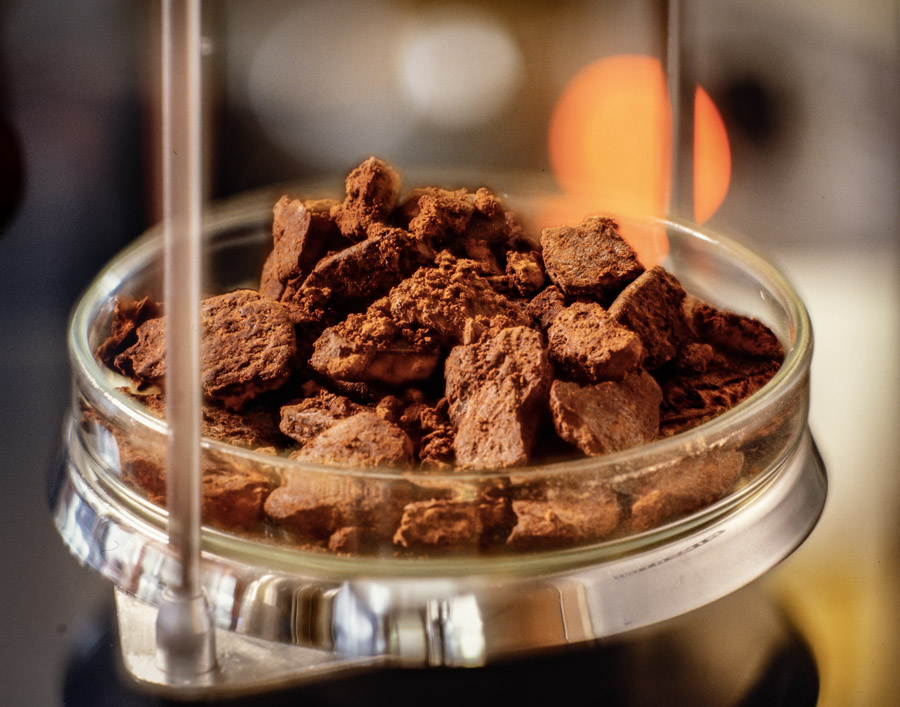

18. Chocolate and health
Recent studies confirm that cocoa, in its purest form, is a true natural treasure with numerous. Here are some of them:
An extraordinary antioxidant: The flavonoids present in cocoa protect the body against cellular damage.
Improves cardiovascular health: Regular consumption of dark chocolate can reduce blood pressure in people with mild hypertension.
A great source of essential minerals: Cocoa contains magnesium, iron, and zinc, which contribute to cardiovascular and brain health.
Contains stimulants: Theobromine, a natural compound in cocoa, boosts mood and energy levels.
Stimulates the release of endorphins, neurotransmitters that create feelings of well-being.
Increases serotonin levels, a neurotransmitter that plays a key role in mood regulation.
Has anti-inflammatory properties, which may be beneficial in managing chronic inflammatory conditions.
Despite its benefits, moderate consumption is essential. Chocolate with high sugar and fat content can counteract its positive effects.
Remember that dark chocolate, with at least 70% cocoa, maximizes health benefits.
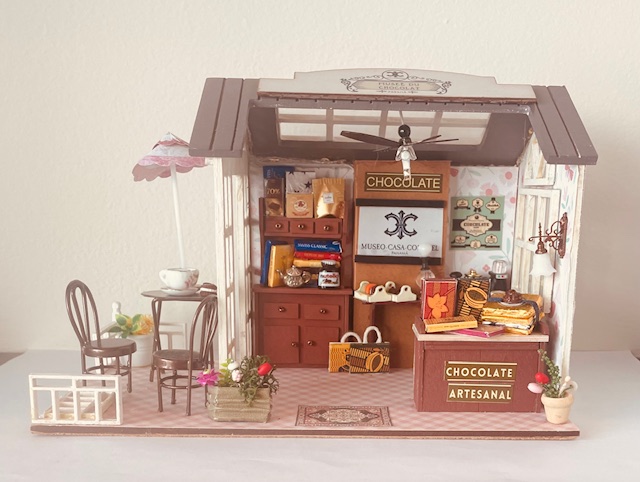
19. Miniature Chocolateries
Welcome to our latest collection. Miniature chocolate shops are detailed scale representations of real or imagined chocolateries, crafted with precision to capture the essence of these magical spaces.
Their construction combines modeling, carpentry, painting, and assembly techniques to achieve a high level of realism. The miniatures before you depict both classic European chocolateries from the late 19th century and traditional Latin American chocolate shops from the second half of the 20th century.
Take a close look at the intricate details of tiny bonbons, chocolate bars, and vintage wrappers. Notice the shelves filled with cacao jars, molds, and utensils, recreating the atmosphere of a traditional chocolaterie.
Look carefully, and you’ll find that some miniatures feature authentic packaging from our Museum’s exclusive designs.
We hope you enjoyed your visit.
We invite you to explore our store on the ground floor.
